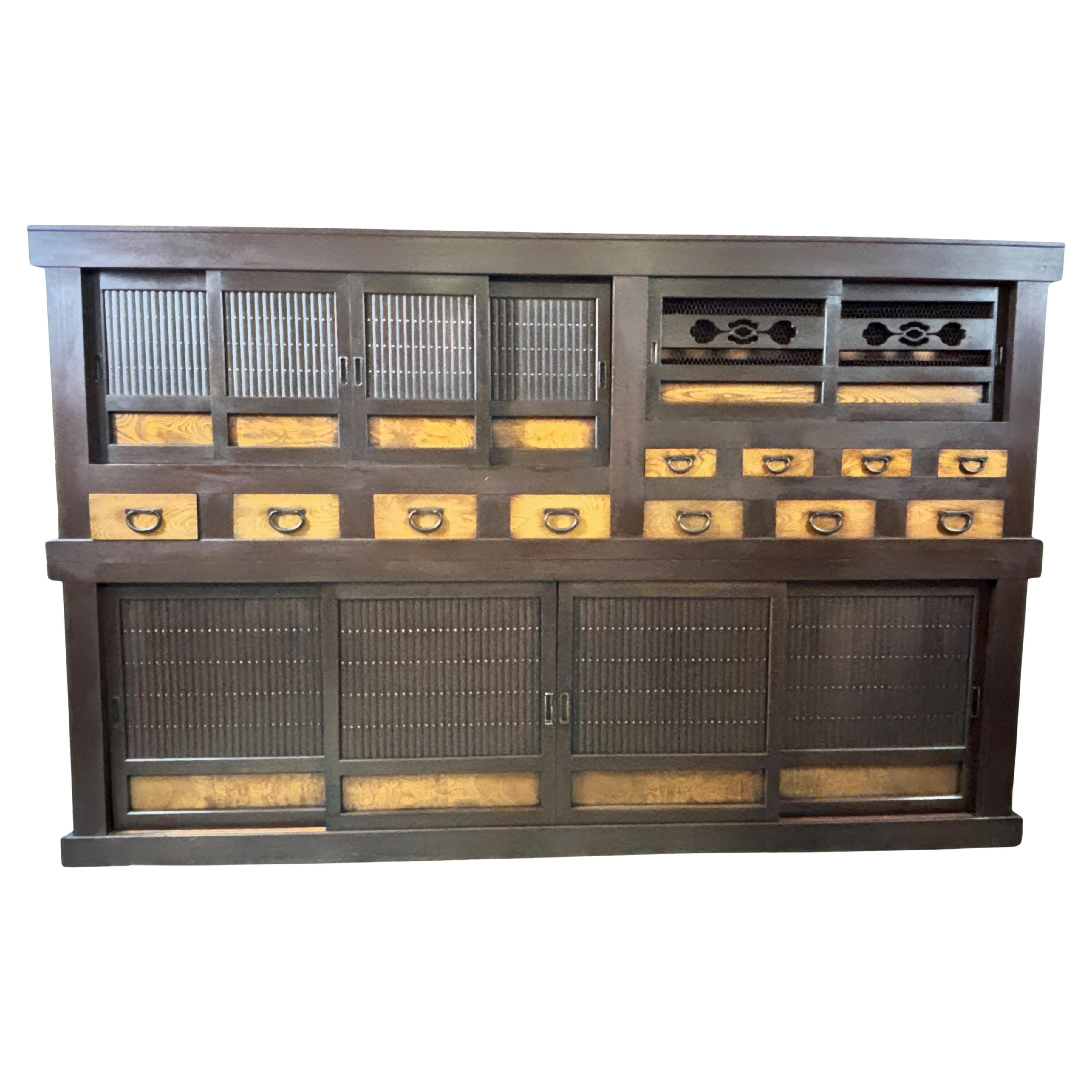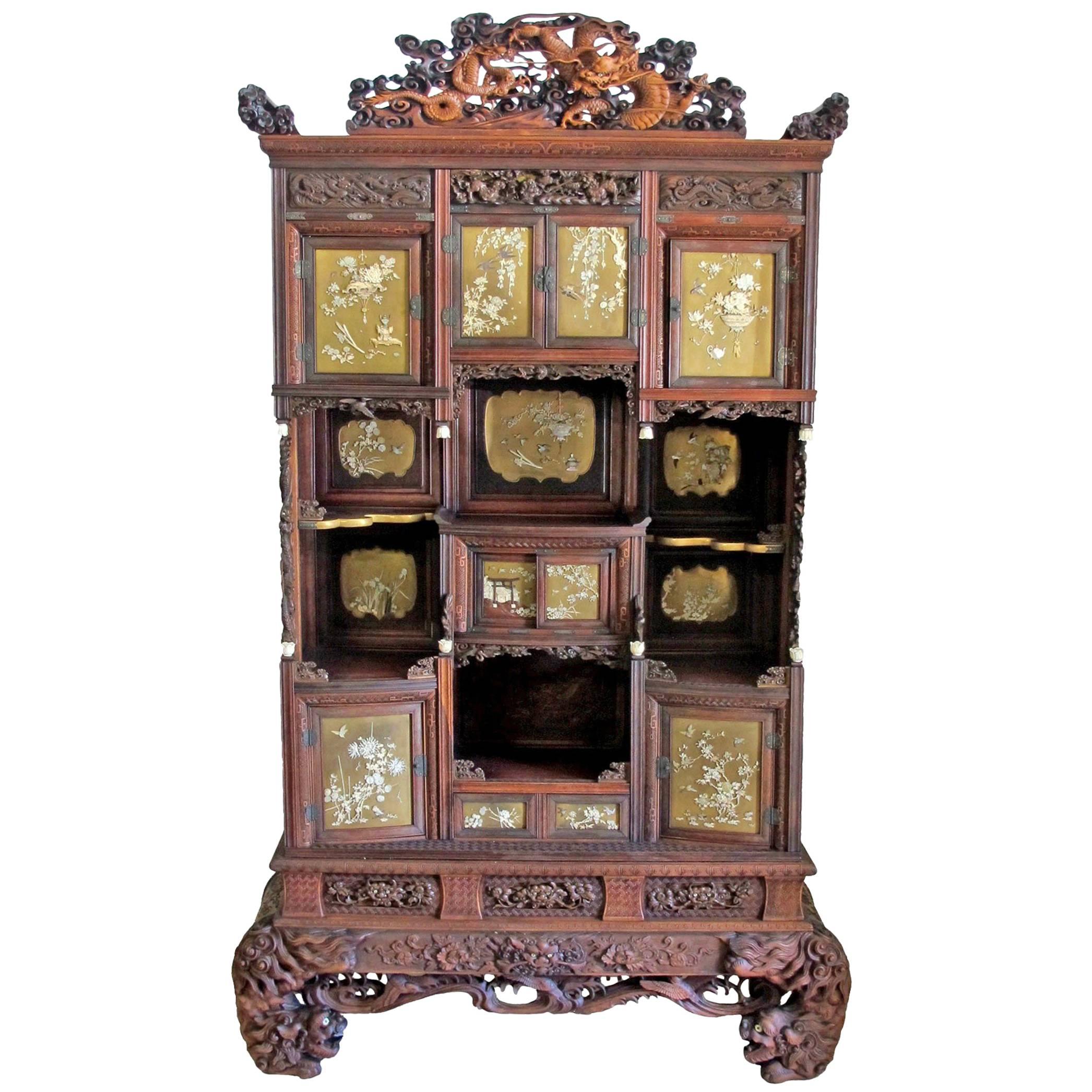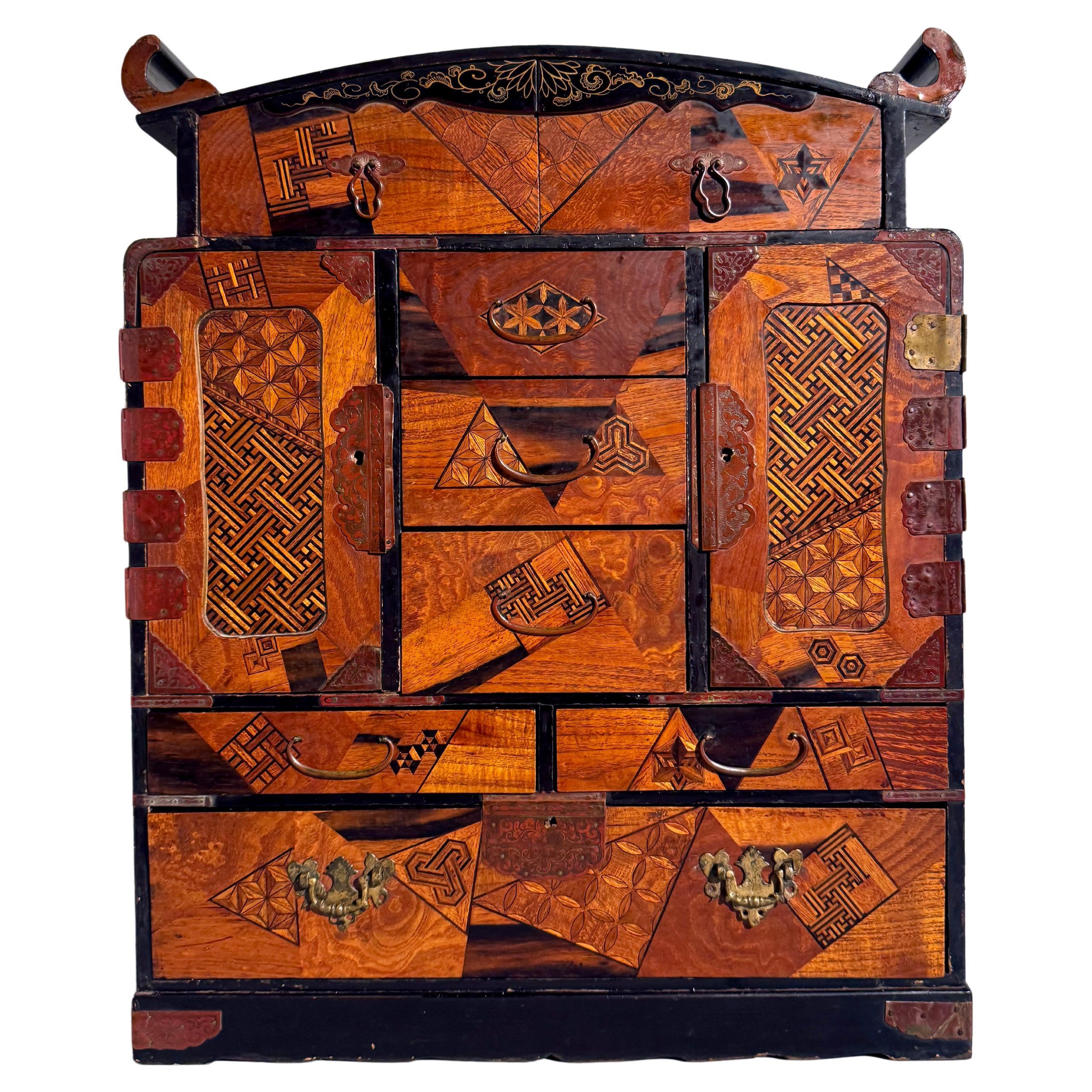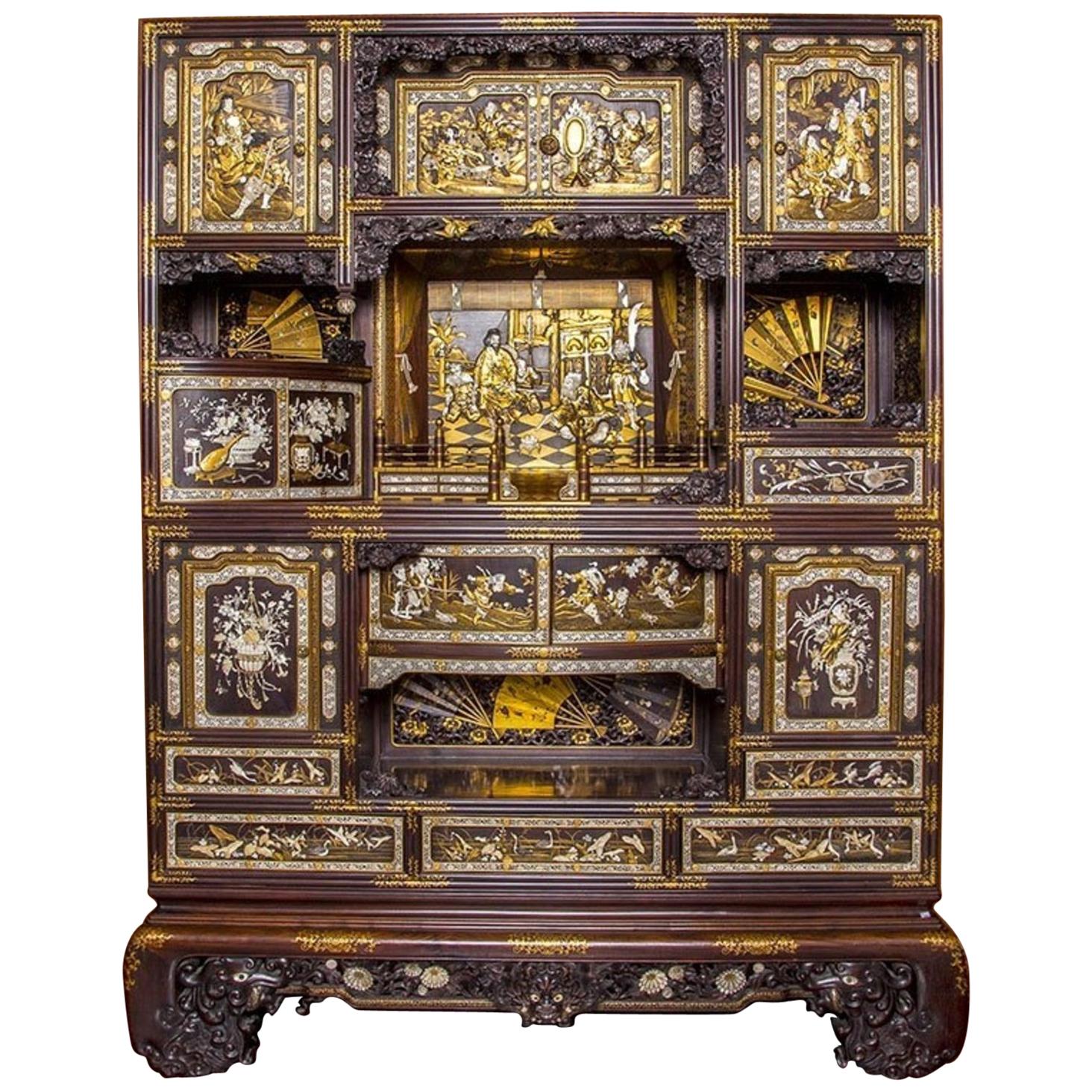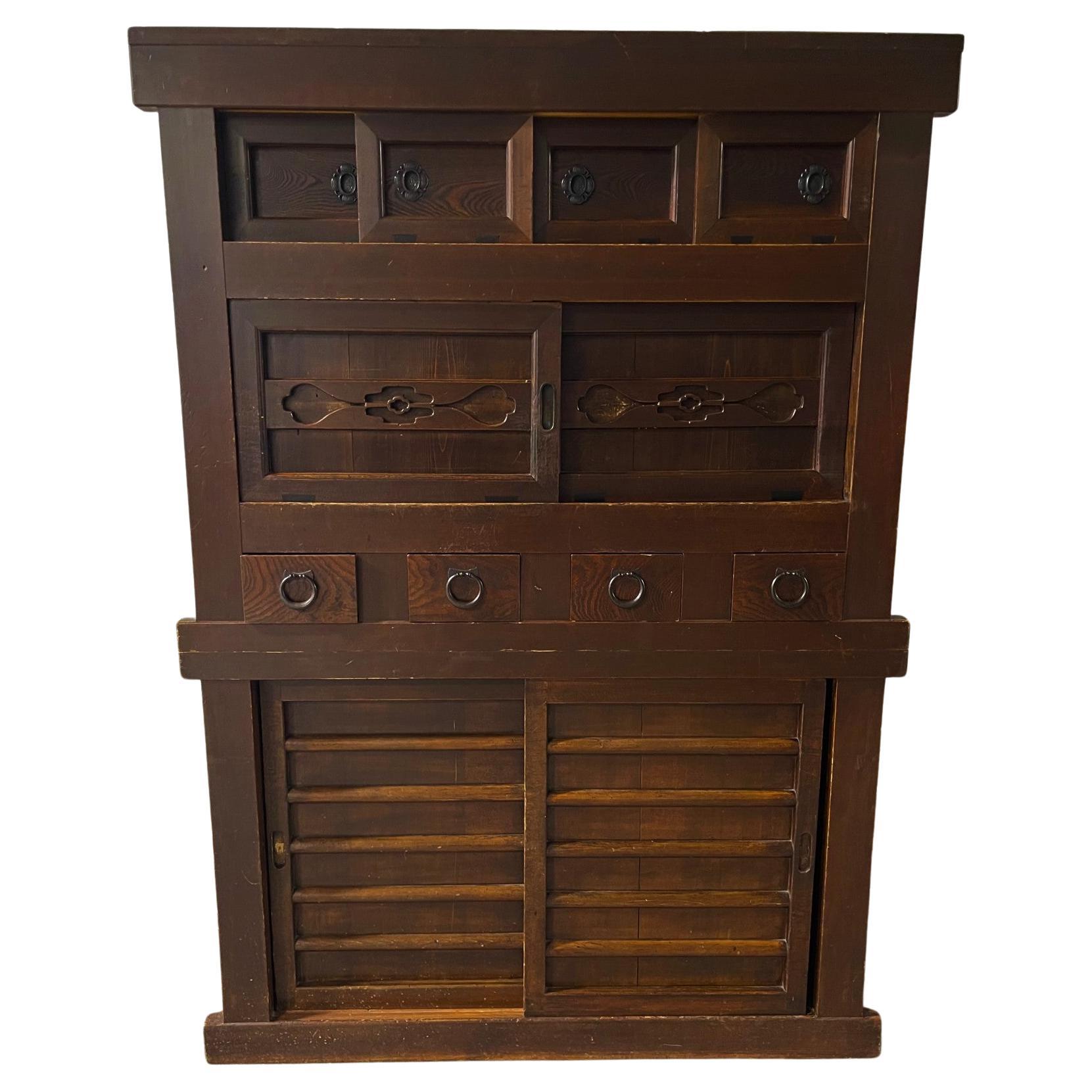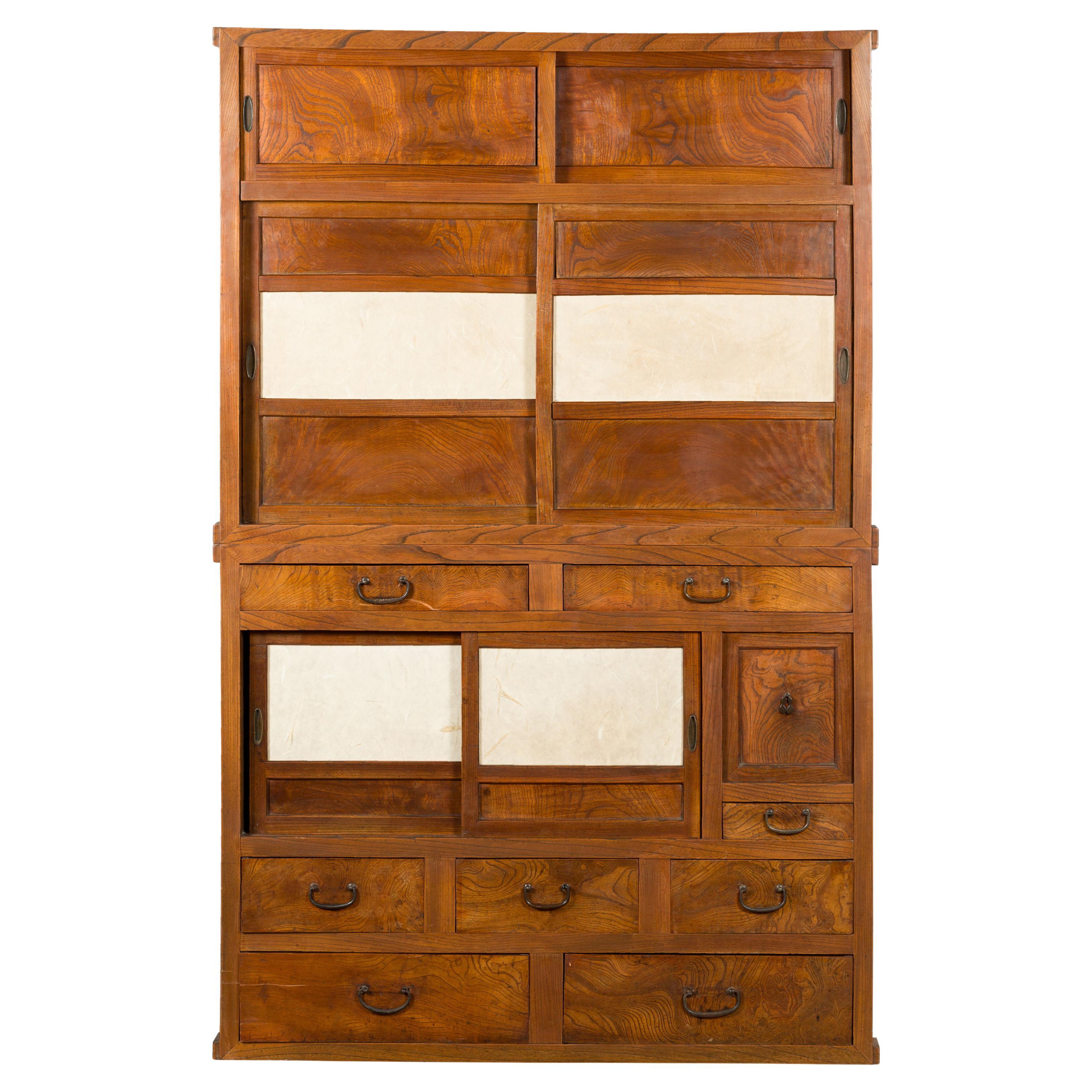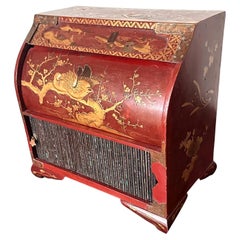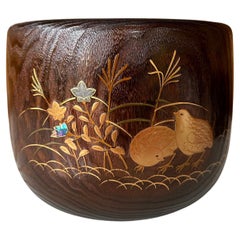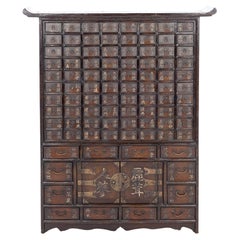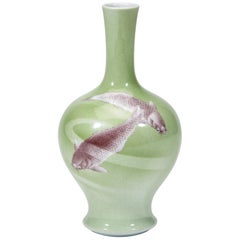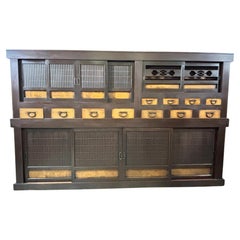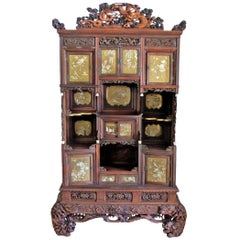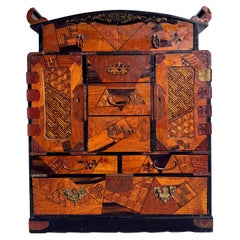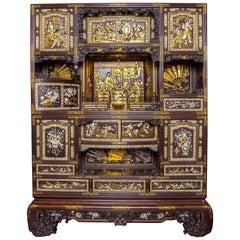Items Similar to Fine Japanese Portable Tea Cabinet Meiji Period with Provenance
Want more images or videos?
Request additional images or videos from the seller
1 of 18
Fine Japanese Portable Tea Cabinet Meiji Period with Provenance
About the Item
An antique Japanese portable cabinet finely fashioned out of Sandalwood, a fragrant and also one of the most expensive woods that was used to make small luxury pieces. The handled cabinet was stained in a deep reddish color and has a very modern silouette with two slightly upturned ends. The cabinet accommodate an assortment of four drawers of various sizes and shapes. The back has finger holes which was designed to help opening the drawers without any handles or pulls. The construction shows exposed finger and through-tenon joints. The drawers were jointed together with tiny wood nails, no metal was used.
The cabinet exhibits fine wood craftmanship. It retains an original paper label from The Takashiyama store in New York City (1958-2010). It states that it was made from sandalwood and used to contain and transport tea utensils. It further dated the piece to 1910s, the end of Meiji Period.
- Dimensions:Height: 12.5 in (31.75 cm)Width: 12.5 in (31.75 cm)Depth: 7 in (17.78 cm)
- Style:Meiji (Of the Period)
- Materials and Techniques:
- Place of Origin:
- Period:
- Date of Manufacture:1910s
- Condition:Wear consistent with age and use. Fine condition with light age-related patina. A stable separation line along the right side of the backing plate, not visible unless turned around. A couple of wood split on the interior base of the drawers. Interior very clean.
- Seller Location:Atlanta, GA
- Reference Number:1stDibs: LU945038696212
About the Seller
4.9
Platinum Seller
Premium sellers with a 4.7+ rating and 24-hour response times
Established in 2006
1stDibs seller since 2010
554 sales on 1stDibs
Typical response time: <1 hour
- ShippingRetrieving quote...Shipping from: Atlanta, GA
- Return Policy
Authenticity Guarantee
In the unlikely event there’s an issue with an item’s authenticity, contact us within 1 year for a full refund. DetailsMoney-Back Guarantee
If your item is not as described, is damaged in transit, or does not arrive, contact us within 7 days for a full refund. Details24-Hour Cancellation
You have a 24-hour grace period in which to reconsider your purchase, with no questions asked.Vetted Professional Sellers
Our world-class sellers must adhere to strict standards for service and quality, maintaining the integrity of our listings.Price-Match Guarantee
If you find that a seller listed the same item for a lower price elsewhere, we’ll match it.Trusted Global Delivery
Our best-in-class carrier network provides specialized shipping options worldwide, including custom delivery.More From This Seller
View AllJapanese Maki-e Lacquered Wood Kodansu Small Chest with Drawers Meiji Period
Located in Atlanta, GA
An antique Japanese Kodansu with two compartments and multiple drawers with red lacquer finish and gold Maki-e and wonderful Raden shell inlays decoration. This rather unusual piece ...
Category
Antique 19th Century Japanese Meiji Furniture
Materials
Wood, Lacquer
Fine Japanese Hibachi Lacquer with Inlays Meiji Period
Located in Atlanta, GA
A fine Japanese wood Hibachi with copper insert circa 1900-30s end of Meiji to Taisho Period. It can be used as a unique planter or to showcase a...
Category
Early 20th Century Japanese Meiji Lacquer
Materials
Copper
Fine Antique Tall Korean Medicine Chest Yakchang Provenance
Located in Atlanta, GA
A fine antique Korean medicine or apothecary chest from late Joseon Dynasty (circa 19th century). Known as Yakchang in Korean, this type of chest was used to sort and store herb medicines in its many small drawers. The prototype was originated in China, but this piece is distinctively Korean. The fine piece was made from Paulownia wood, which has an insect-repelling quality. Relatively tall, the Yakchang features a slightly overhanging and upturning pagoda plank top. The upper part has ten rows of smaller drawers, eight per row and eighty total. The lower part is centered with double doors with brass hinges and pull that open to a small storage space, which is surrounded by twelve larger drawers. Each drawer is fitted with yellow brass pulls and with two names of the herbs in gilt Hanja writings.
Examination of the construction and patina shows that this is an authentic antique piece that has seen extensive historical use. Provenance: Purchase from Lucky-Chosun Furniture, Seoul, Korea in 1986 and remains in an American collection until now. With an original invoice and also a freight invoice from Korea to Hongkong. There is also an insurance appraised by Sotheby's from 1997.
A tall medicine chest with similar configuration from a doctor's home in Yongin Folk Village is illustrated on plate 75 page 61 in the book "Korean Furniture and Culture" by Bokcha, Soon and Youngsoon.
To compare with another Medicine Chest, see illustration on page 47 in "Korean Antique Furniture...
Category
Antique 19th Century Korean Other Furniture
Materials
Brass
Fine Japanese Ceramic Vase Makuzu Kozan Meiji Period
By Makuzu Kozan
Located in Atlanta, GA
A Japanese long neck porcelain vase circa 1900-1910s by the studio of Miyagawa Kozan (1842–1916), one of the most established and collected Japanese ceramist from the end of Meiji Period. Commonly known as Makuzu Kozan, which also appears as the signature on his work, his originally birth name was Miyagawa Toranosuke. He was the appointed artist to the Japanese Imperial household and his work was exhibited in many international fairs that the Meiji government participated at the turn of the century.
This vase features an elegant Classic form with a slender neck and slightly flared mouth above a baluster body. It was finely painted with two swimming carps in a copper red underglaze among green ribbons like waves. The background display a brilliant verdant green overall, Around the fish a poetic hazy effect was emphasized for a visual complexity by Fuki-e (the blow painting), an invention in Kozan's studio. The new technical development of chemical colors from the west was embraced circa 1900s in Kozan studio. This empowered the more creative experiments with not only colors, but also concept of dimension, which led Makuzu Kozan's work to become a bridge between East and West aesthetics. This is particularly evident in this vase with the Masterly details of the brush strokes, the expertly employment of gradient of color, and a very realistic and detailed rendering of the fish and their vivid motions.
For two similar examples of Kozan's work with similar carps decoration, see Page 148-149 of the book: Sekai ni Aisa Reta ya Kimono Miyagawa Kozan Makuzu...
Category
Early 20th Century Japanese Meiji Ceramics
Materials
Ceramic
Japanese Gohon Glazed Tea Bowl Chawan Meiji Period Ex-Musuem
Located in Atlanta, GA
A Japanese ceramic Gohon tea bowl (Chawan) with a slightly irregular wall circa 18th century of Meiji Period. Supported by a high notched foot ring that was left unglazed, the chawan...
Category
Antique 18th Century Japanese Meiji Ceramics
Materials
Ceramic
Fine Japanese Embroidery Silk Fukusa Kabuki Story Meiji Period
Located in Atlanta, GA
A Japanese silk embroidery Fukusa panel circa 1890-1910s toward the end of Meiji Period. The spectacular needlework on this piece is a tour-de-force showcasing a scene from Kabuki th...
Category
Antique 1890s Japanese Meiji Textiles
Materials
Silk
You May Also Like
Large Antique Japanese Meiji Period Mazuya Tansu Cabinet
Located in San Francisco, CA
A large impressive antique Japanese Mizuya Tansu cabinet (kitchen chest) in 2 sections, made of Hinoki (Cypress) and Chestnut woods. All original...
Category
Antique Late 19th Century Japanese Meiji Furniture
Materials
Chestnut, Cypress
Japanese Carved and Lacquered Shibayama Cabinet, Meiji Period
Located in San Francisco, CA
An elaborate and finely detailed carved wood, and gold lacquered Shibayama cabinet (Chigaidansu). Having beautifully applied semi-precious stone and ...
Category
Antique 19th Century Japanese Meiji Furniture
Materials
Mother-of-Pearl, Wood
Japanese Marquetry Hanging or Table Cabinet, Meiji Period, c. 1900, Japan
Located in Austin, TX
A large and remarkable Japanese lacquer and marquetry decorated table or hanging cabinet, Meiji Period, circa 1900, Japan.
The cabinet of square form surmounted by an arched top with upturned scroll ends. Eight drawers of various shapes and sizes adorn the exterior of the cabinet. Doors on either side open to reveal interiors fitted with cubby holes over a single drawer.
The front of the cabinet is decorated with scattered geometric marquetry patterns of various design utilizing contrasting woods, including hardwood and burl, all in the yosegi zaiku technique.
The sides and top of the cabinet of black lacquer with maki-e lacquer painted designs of flowers and grasses. The back of plain black lacquer with two hoops for hanging.
The interior of the cabinet doors and the interior drawers decorated in the wakasa lacquer technique, with gold rhomboid accents against a polished black lacquer ground.
Overall a striking accent piece and nice example of Japanese yosegi...
Category
Antique Early 1900s Japanese Meiji Furniture
Materials
Metal, Brass, Copper
Rare Meiji Period Japanese Lacquer Cabinet
Located in West Palm Beach, FL
Large, rare and important Meiji period, late 19th century, Japanese lacquer cabinet
Meiji period (1868-1912)
19th century
In three parts, desi...
Category
Antique 19th Century Furniture
Materials
Wood
Japanese Tansu Storage Cabinet with Sliding Doors, Meiji Period, 19th Century
Located in Savannah, GA
Large Two Section Japanese Kitchen Tansu, Late 19th Century. Interior bottom section has been modified to accommodate a TV. Part of the back bot...
Category
Antique Late 19th Century Japanese Meiji Cabinets
Materials
Elm
Japanese Meiji Period Kanto Style Kiri Wood Kitchen Cabinet with Sliding Doors
Located in Yonkers, NY
A Japanese Meiji period kiri wood two-part kitchen cabinet in the Kanto style with sliding doors, parchment paper and drawers. Created in Japan during the Me...
Category
Antique Late 19th Century Japanese Meiji Cabinets
Materials
Wood, Parchment Paper
Recently Viewed
View AllMore Ways To Browse
Provenance Antiques
Asian Furniture With Drawers
Meiji Wood
Meiji Wood Furniture
Japanese Labels
Japanese Meiji Cabinet
Japanese Metal Cabinet
Meiji Period Cabinet
Antique Sandalwood
Japanese Tea Cabinet
Used Craft Table
Interior Form Furniture
Vintage Chrome Furniture
Used Wall Sconce Lights
Antique Living Room Tables
Desks Office Furniture Furniture
Mid Century Dining Room Chandelier
In Store
